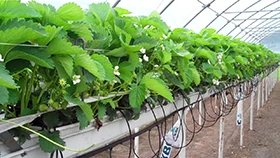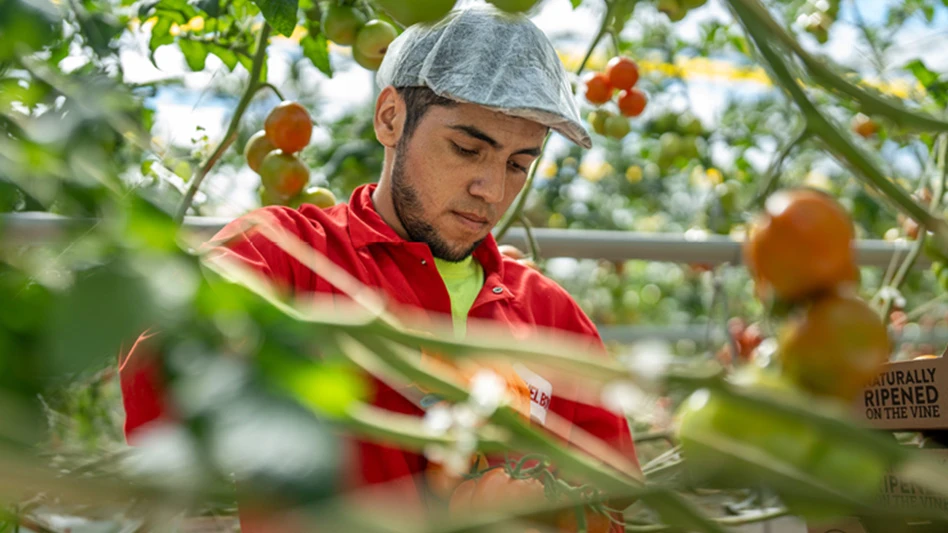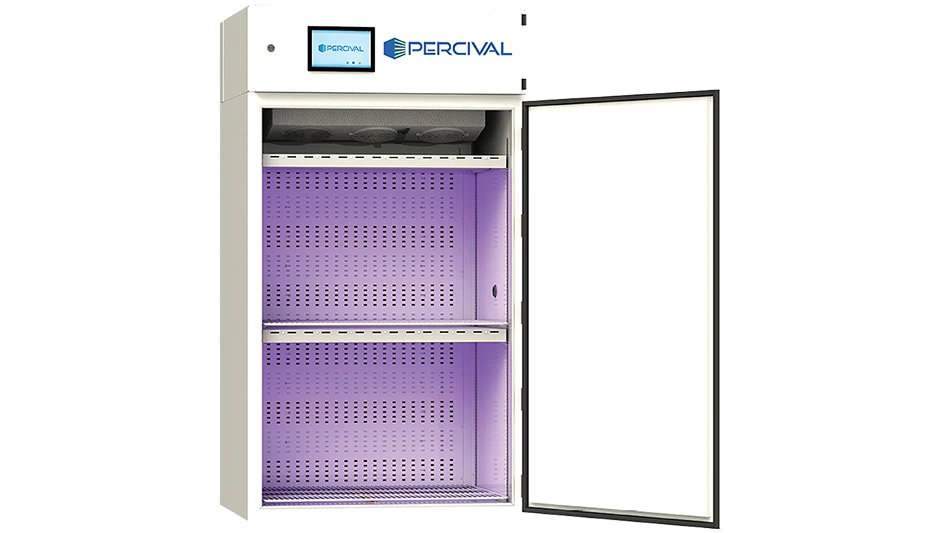
 From University of Arkansas Division of Agriculture:
From University of Arkansas Division of Agriculture:
Photo: Strawberries being grown in an elevated hydroponic system.
A series of videos will provide the instruction, and project leader Michael Evans expects that the results will lead to more growers raising strawberries year-round.
The effort is among several projects in the National Strawberry Sustainability Initiative that the Walmart Foundation is supporting through a $3 million donation to the Division of Agriculture that was announced in February. The donation established a competitive grants program that is being administered by the Division’s Center for Agricultural and Rural Sustainability.
“The result of this project will be that strawberry growers will learn how to build, maintain and use various hydroponics systems (troughs, gutters and buckets), which will allow them to produce strawberries in a more sustainable way,” said Evans, a horticulture professor in the Division. Commercial strawberry growers are generally accustomed to producing their crop in the ground or in field situations in beds or through low-tunnel or high-tunnel production systems.
“Most growers do not have the detailed knowledge or experience using hydroponic systems to be able to take advantage of the benefits they provide,” Evans said. In addition to extending the production season, placing hydroponic systems in high tunnels and drop-wall greenhouses will enable growers to reduce chemical inputs for soil sterilization, fertilization, weed control and pest management. Water resources can be preserved in the production system and fresh berries will be at less risk from human pathogens.
Placing the hydroponic systems in high tunnels and drop-wall greenhouses will allow longer growing seasons up to year-round, depending on the structure and the local climate, Evans said.
To explain the process to growers, the team will produce several videos that will be made available on a YouTube channel dedicated to sustainable hydroponic strawberry production. The team will start from scratch so the videos can record the entire process.
“We will assemble the structures and produce strawberries in the hydroponic systems,” Evans explained. “As we assemble the structures and systems and manage the strawberry crops, we will produce detailed videos that document each phase, from building structures to harvesting fruit.”
Upon completion of the videos, the team will monitor the number of viewings and the viewers’ comments and will also monitor the number of strawberry growers who begin using hydroponic systems.
Strawberry production in the U.S. has been predominantly centered in California and Florida in recent decades. “The goal of the National Strawberry Sustainability Initiative is to increase local and regional production of strawberries,” said Curt Rom, professor of horticulture in the Division of Agriculture and member of the CARS leadership team. ”We seek to reduce the environmental impact of production, to reduce transportation distances between farms and markets or consumers, to reduce product loss in the supply-value chain and improve the environmental and economic sustainability of the production system.”
Latest from Produce Grower
- International Fresh Produce Association Expands Food Safety Team
- USDA Announces Presidential Appointments
- Food safety starts with plugs
- Water treatment strategies
- AeroFarms reveals patented technology for microgreen production, prompting talk of expansion
- Cox Farms partners with Feeding America to tackle food insecurity
- Ethical labor practices supported by third-party certification programs
- Spotlight on strawberry production





